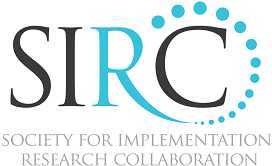Breakout E – May 16, 2013
1. Transformation & Spread of Primary Care Clinics into Medical Homes: It’s Slow, Hard Work
Presenter: Leif I. Solberg, MD
Authors: Leif I. Solberg, MD, Juliana Tillema, MPA, A. Lauren Crain, PhD, Robin Whitebird, PhD, & Patricia Fontaine, MD, HealthPartners Institute for Education & Research
Abstract: Although many advocates of patient-centered medical homes talk as though transformation occurs quickly and fairly abruptly, there is very little evidence to support that. We have studied the first 135 primary care clinics in Minnesota to be certified as health care homes (our local term for medical homes) through a fairly rigorous review and certification process. Our data shows that while they have implemented fairly large changes in the practice systems needed to function as medical homes over a three year period, there has been relatively little change in standardized performance rates for diabetes and cardiovascular disease care. Moreover, while average performance rates for certified health care homes are higher than for uncertified primary care clinics, there is wide variation in both groups and considerable overlap. Based on intensive interviews with leaders in nine certified clinics and a survey of them all, we have been able to identify the strategies and characteristics that most clearly differentiate the certified clinics with the greatest transformation from those with the least. This information has been translated into recommendations for what clinics should pay most attention to if they wish to truly transform and achieve triple aim results for their patients.
2. A Qualitative Study of Fidelity: Understanding Variation in Implementation of the Patient-Centered Medical Home
Presenter: Rosalind Keith, PhD
Author: Rosalind Keith, PhD, Mathematica Policy Research, Inc.
Abstract: Evaluating fidelity is particularly salient for complex, multi-faceted interventions, such as the patient-centered medical home (PCMH) model of care delivery, where poor implementation of different model components can compromise the effectiveness of the intervention as a whole in improving patient outcomes. This presentation will focus on the qualitative assessment of fidelity to the PCMH model. A comparative case analysis was conducted to examine fidelity to the PCMH in six primary care clinics affiliated with a large, academic, integrated health system. The clinics in the sample had similar organizational structures and resources (e.g., health information systems, incentives, quality initiatives centralized within the system, PCMH tools and processes, collaborative learning opportunities focused on PCMH implementation). Interview and observational data were analyzed deductively to assess variation in fidelity across the clinics. Categorical measures were constructed to reflect relative ratings of clinic level fidelity for each PCMH component. The findings show that despite having similar organizational structures, considerable variation in fidelity to the various PCMH components existed across the six clinics.
3. CADET: Clinical & Cost Effectiveness of Collaborative Care for Depression in UK Primary Care: A Cluster Randomized Controlled Trial
Presenter: David A. Richards, PhD
Author: David A. Richards, PhD, University of Exeter, UK
Abstract: Background: Collaborative care for depression is effective in the US but effects are uncertain internationally.
Design: Multi-centre, cluster randomised controlled trial with two parallel group arms.
Results: 581 participants recruited from 49 primary care practices; 276 in collaborative care, 305 usual care. Participants in collaborative care had a mean reduction in depression score 1.33 PHQ-9 points greater (95% CI 0.35 to 2.31, p=0.009) compared to usual care (effect size = 0.26, 95% CI 0.07 to 0.46). Odds ratios for PHQ-9 scores below depression threshold (PHQ<10) were 1.31 (95% CI 1.08 to 1.58, p=0.006) at four months and 1.39 (95% CI 1.15 to 1.67, p=0.001) at 12 months in favour of collaborative care. Odds ratios for PHQ-9 reductions of 50% or more were 1.34 (95% CI 1.11 to 1.62, p=0.003) at four months and 1.34 (95% CI 1.11 to 1.61, p=0.002) at 12 months.
